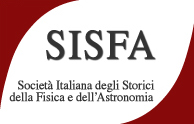Speaker
Description
Enrico Federico Jest was the progenitor of an important family of scientific instrument makers who remained active in Turin until 1900. His career as a “mécanicien” began in 1810. In 1814 he became the “machinist” of the Physics Cabinet at the University. He held this position until 1849. In 1852 he handed it over to his son Carlo. Handwritten documents reveal Enrico's intense mechanical activity. As well as cleaning the machines, Enrico had to repair them and build new ones, all while trying to keep costs within an annual budget. His most frequent task was to prepare and carry out the public and private experimental physics experiments that took place once a week. Over the years, Enrico took on new roles outside the university. Some sources mention him in Turin as a machinist in Arsenal's Physics Cabinet and some technical schools. In the 1830s, Jest set up his own business making scientific instruments for schools and private customers. In Turin, his workshop and warehouse were located in Via Po, near the “Palazzo della Università”. In 1939 Enrico, assisted by his son Carlo, was the first to introduce the daguerreotype in Piedmont. He probably first proposed the sale of photographic material in Italy in one of his commercial catalogues. Jest is also remembered for being the first to introduce in Italy the Armstrong hydro-electric machine, invented in England in 1840. A beautiful machine signed “E. Jest in Torino 1844”, is now in the “Giovanni Poleni” University Museum in Padua.

